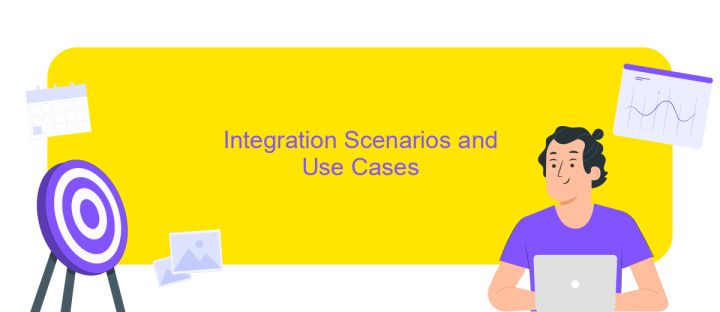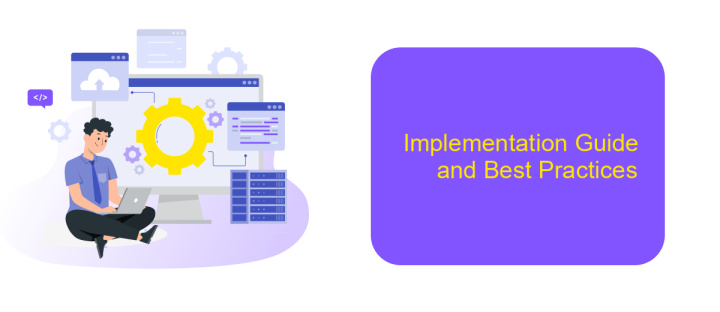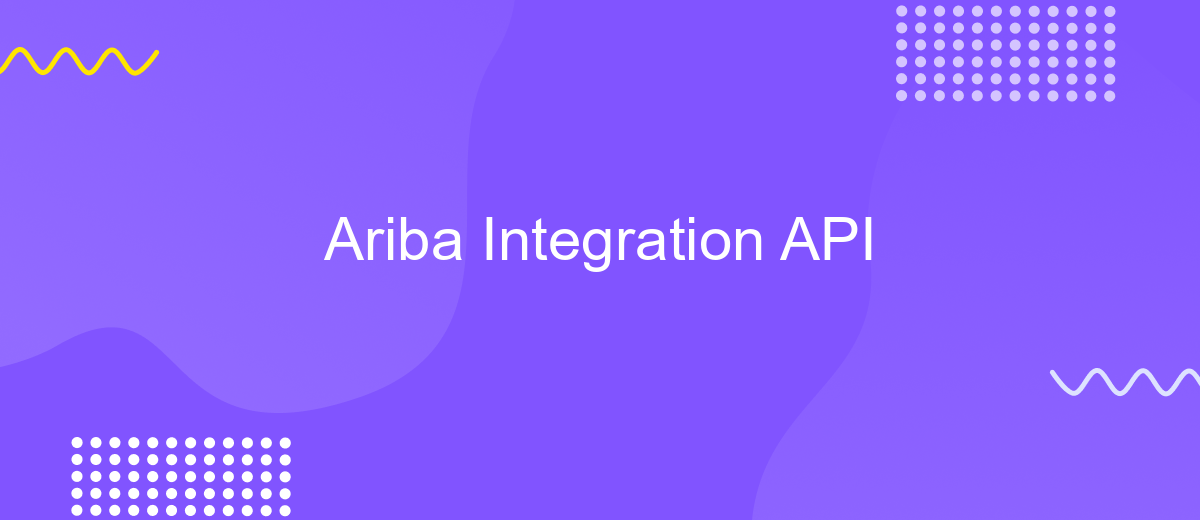Ariba Integration API
The Ariba Integration API is a powerful tool that enables seamless connectivity between the Ariba Network and various enterprise systems. Designed to streamline procurement processes, it allows businesses to automate and optimize their supply chain operations. By facilitating real-time data exchange and enhancing collaboration with suppliers, the API empowers organizations to achieve greater efficiency, reduce costs, and improve decision-making across their procurement activities.
Overview of Ariba Integration API
Ariba Integration API is a powerful tool designed to facilitate seamless connectivity between various business applications and the Ariba Network. It enables organizations to streamline their procurement processes by integrating Ariba's cloud-based solutions with their existing enterprise systems. This integration enhances operational efficiency, reduces manual efforts, and improves data accuracy across procurement activities.
- Automated data exchange between enterprise systems and Ariba Network.
- Real-time synchronization of procurement processes and transactions.
- Customizable integration options to fit unique business requirements.
- Robust security features ensuring data integrity and confidentiality.
- Comprehensive support for various data formats and communication protocols.
By leveraging the Ariba Integration API, businesses can achieve a higher level of automation and transparency in their procurement operations. This leads to better supplier collaboration, more informed decision-making, and ultimately, a more agile supply chain. The API's flexibility and scalability make it an ideal choice for organizations looking to optimize their procurement strategies and drive greater value from their technology investments.
Key Features and Capabilities

Ariba Integration API offers seamless connectivity and integration capabilities, enabling businesses to streamline their procurement processes. This API facilitates efficient data exchange between Ariba solutions and external systems, ensuring real-time synchronization and improved operational efficiency. With robust features like automated data mapping and transformation, it simplifies complex integration tasks, allowing users to focus on strategic activities rather than technical challenges.
An essential feature of the Ariba Integration API is its scalability, which supports businesses of all sizes by accommodating varying data volumes and integration complexities. The API's compatibility with services like ApiX-Drive enhances its flexibility, offering users a user-friendly platform to effortlessly set up and manage integrations. ApiX-Drive's intuitive interface and automation capabilities further simplify the integration process, reducing the need for extensive IT resources and minimizing potential errors. Together, these features empower organizations to optimize their procurement workflows, achieve greater transparency, and drive significant cost savings.
Integration Scenarios and Use Cases

Ariba Integration API offers versatile solutions for seamless connectivity between various enterprise systems, enhancing procurement processes and business efficiency. By leveraging this API, organizations can automate data exchange, streamline workflows, and foster collaboration across departments. The integration scenarios are designed to cater to diverse business needs, ensuring flexibility and scalability in operations.
- Supplier Management Integration: Automate supplier onboarding, qualification, and performance tracking by synchronizing data between Ariba and existing ERP systems.
- Procure-to-Pay Automation: Enhance the procure-to-pay cycle by integrating purchase orders, invoices, and payment data, reducing manual intervention and errors.
- Contract Lifecycle Management: Facilitate contract creation, approval, and compliance monitoring through integration with contract management systems, ensuring alignment with procurement policies.
- Spend Analysis: Integrate spend data from multiple sources to generate comprehensive reports, enabling better decision-making and cost optimization.
- Catalog Management: Synchronize product catalogs across platforms, ensuring accurate and up-to-date information for procurement teams.
These use cases illustrate the transformative potential of Ariba Integration API in optimizing procurement functions. By implementing these scenarios, businesses can achieve greater transparency, reduce operational costs, and enhance supplier relationships. The API's flexibility allows for tailored solutions that align with specific organizational goals, driving overall business success.
Implementation Guide and Best Practices

Integrating with the Ariba API can significantly enhance your procurement processes, but it requires careful planning and execution. Start by thoroughly understanding the specific requirements of your organization and how they align with Ariba's capabilities. This alignment will help you tailor the integration to meet your business needs effectively.
Next, ensure that your technical team is well-versed with Ariba's API documentation. This knowledge is crucial for a smooth implementation. Establish a robust testing environment to simulate real-world scenarios, allowing you to identify potential issues before going live. Regularly update your integration to accommodate any changes in the API or your internal systems.
- Map out clear data flow diagrams to visualize integration points.
- Utilize API versioning to manage updates without disrupting operations.
- Implement strong security measures to protect sensitive data.
- Monitor API performance and set up alerts for any anomalies.
Finally, maintain open communication with the Ariba support team. Their expertise can be invaluable in troubleshooting and optimizing your integration. By following these best practices, you can ensure a seamless and efficient integration with the Ariba API, maximizing its benefits for your organization.


Troubleshooting and Common Issues
When facing issues with Ariba Integration API, the first step is to verify your API credentials and endpoints. Ensure that the authentication details are correct and that the endpoints are accessible. Network connectivity problems can also lead to API failures, so check your firewall settings and ensure that the necessary ports are open. Additionally, examine the API request and response logs for any error messages or codes that can provide further insight into the issue.
Another common issue is data format discrepancies. Ensure that the data being sent complies with Ariba's API specifications, including correct field types and structures. If you're integrating multiple systems, consider using a service like ApiX-Drive to streamline the process. ApiX-Drive can help automate data transfers between systems, reducing the likelihood of manual errors. Lastly, keep your API documentation up to date and refer to it regularly for any changes or updates in the API structure or functionality.
FAQ
What is Ariba Integration API used for?
How can I authenticate API requests in Ariba Integration API?
What data formats are supported by Ariba Integration API?
How can I monitor the performance of my Ariba integrations?
What options are available for automating Ariba integrations without extensive coding?
Apix-Drive will help optimize business processes, save you from a lot of routine tasks and unnecessary costs for automation, attracting additional specialists. Try setting up a free test connection with ApiX-Drive and see for yourself. Now you have to think about where to invest the freed time and money!

